Cheating Death with Arthur Beaumont
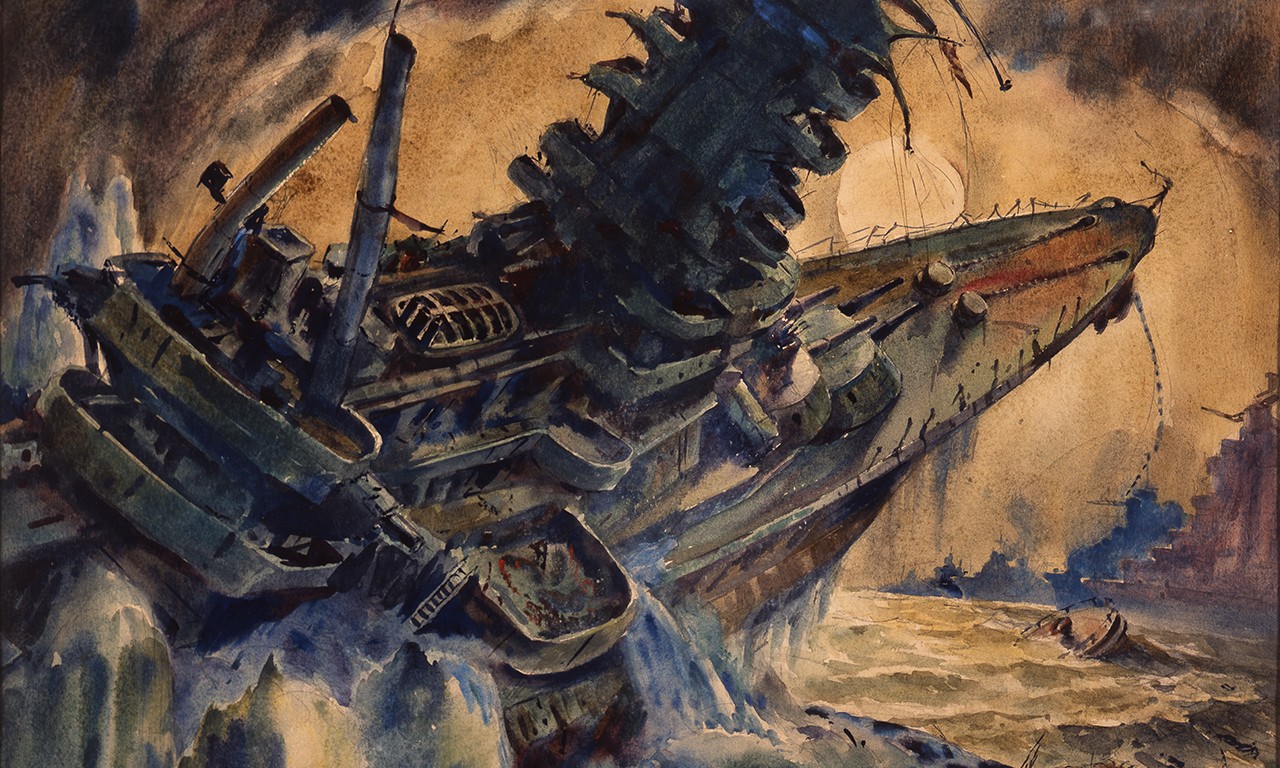 |
| Death of an Ignoble Enemy, 1946 Arthur Edwaine Beaumont (English-born American, 1890-1978) Watercolor and tempera on paper; 24 1/2 x 28 1/2 in. 98.58.1 Gift of John E. Seabern |
Don’t Fear the Reaper, Ignore Him
Some of us may have at one point in our lives found ourselves in a precarious situation such as a near-miss car accident that could just as easily have gone the wrong way, we may have battled a ferocious disease and come out on the other end or could have been nearly blown off a cliff by a strong gust while visiting the Torres del Paine in Chile as a child, for example. Arthur Edwaine Beaumont—renowned naval painter and subject of the Bowers Museum’s upcoming Arthur Beaumont: Art of the Sea—as if plagued by some terrible force haphazardly collected these close calls. Over the course of his life Beaumont narrowly dodged no less than eight near-death experiences. This blog post looks closely at a few of these stories, presenting them with relevant paintings and photographs from the upcoming exhibition.
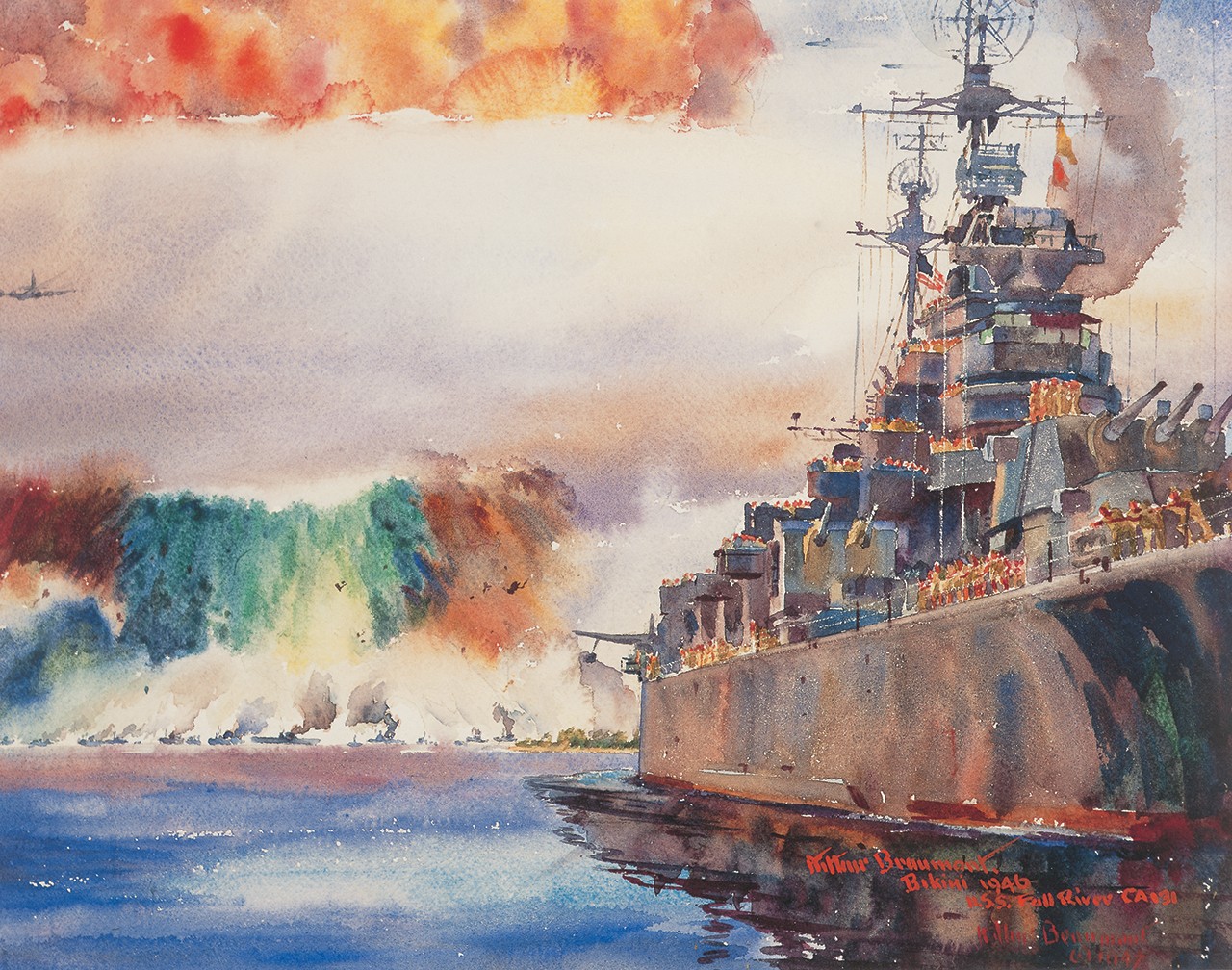 |
| Arthur Beaumont USS Fall River, Bikini Atoll Baker Bomb Test, July 25, 1946 Watercolor 13 x 17 in. Douglas Dreibelbis Collection |
Off the Rails
Beaumont’s narrow escapes from the ever-after began at a strikingly young age. When only four years old, Beaumont was out for a walk with his maternal grandfather when his attention was stolen by a cluster of daisies beside some train tracks. Before his grandfather could stop him, Arthur had run to the flowers, putting himself in the path of an oncoming train. The grandfather managed to calmly ask his progeny’s progeny to come back to him and Arthur oblivious to the possibility of his imminent demise obliged just in time. Seconds after stepping off the tracks, the train flew by with a strong enough air current to knock the boy down. As it happened, Beaumont was struck by a vehicle much later in his life. In 1939 Beaumont was crossing the street heading to his Long Beach studio late at night and he was hit by a motorist, breaking the bones in his right leg.
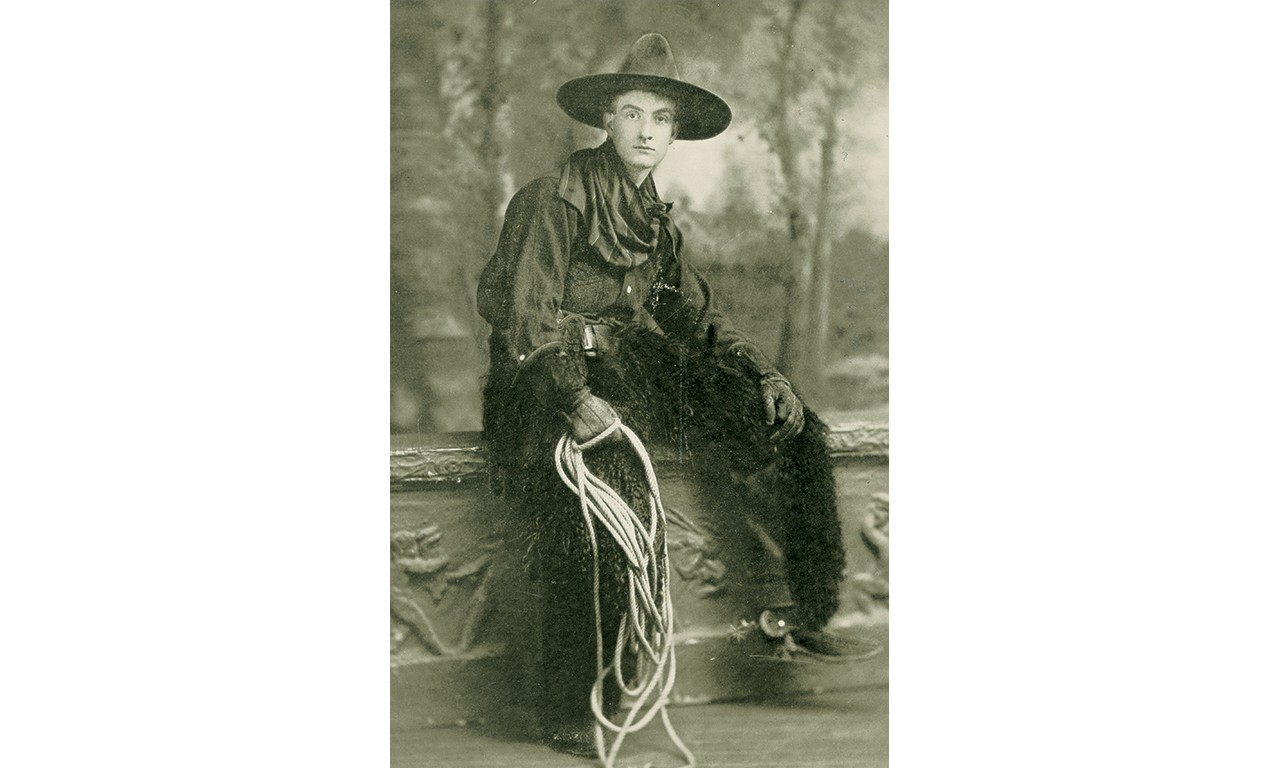 |
| Bronco Pete, 1912 Arthur Beaumont-Crabbe, age 22 Beaumont Family Archives |
Some Like it Hot
Newly arrived in California to study art at Berkley, Beaumont was in desperate need of tuition money, so during his first summer break he traveled to Oregon to work as a ranch hand. Believing the water from a lake near the ranch to be okay to drink, one hot summer day Beaumont took a swig and contracted typhoid fever. Given the contagious nature of typhoid, Beaumont was committed to a rest home where he was only fed milk for six weeks after which he was left skeletally thin and with a fever that would not go down. Feeling certain he would die there, Beaumont planned for a great escape in which he borrowed clothes, satiated the guard dogs with scraps and in his weakened state hiked seven miles to the nearby Klamath Falls. There he was taken in by a sympathetic German family who nursed him back to good health.
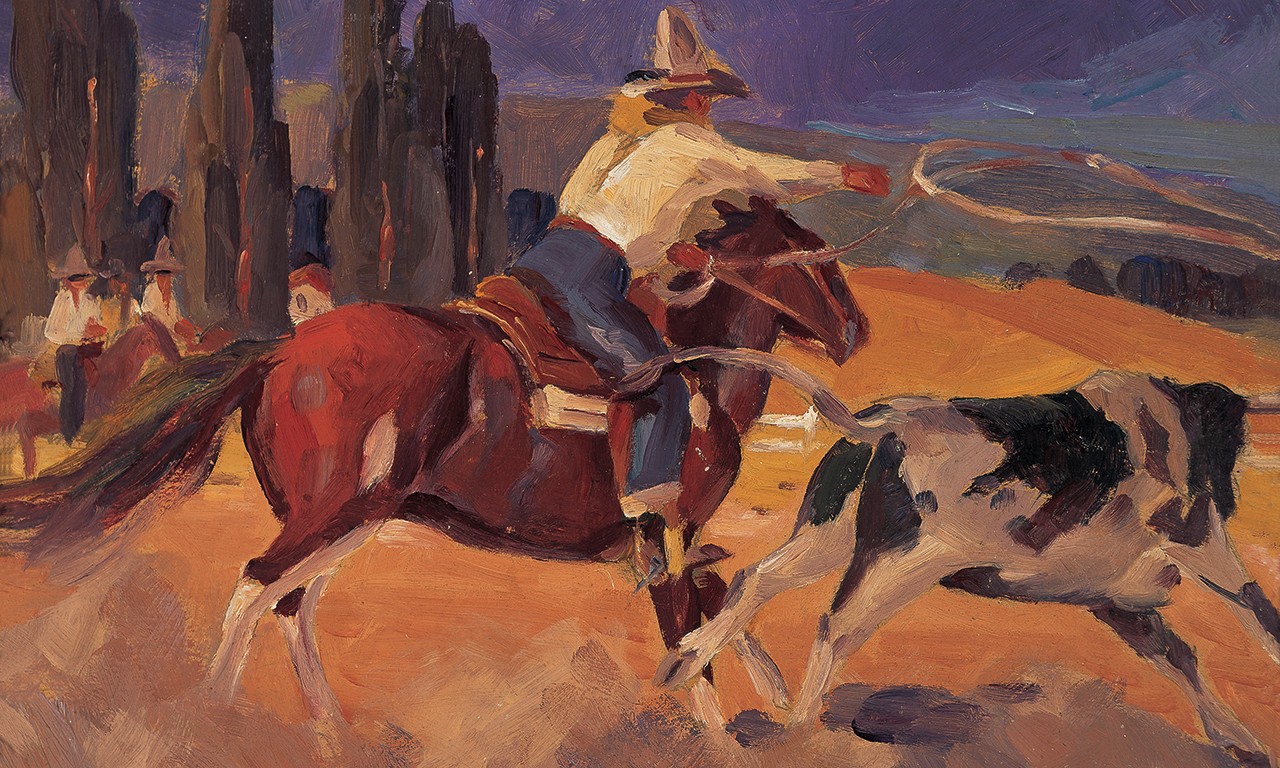 |
| Cowboy at the Corral Lassoing a Steer, 1929 Arthur Edwaine Beaumont English-born American, 1890-1978) Oil on canvas; 10 x 13 1/2 in. 95.41.1 Gift of Paul and Ruth Knaak |
No Good Deed Goes Unrustled
Perhaps the single most impressive near-death experience Beaumont faced came only a few years after his bout with typhoid. Still going by his birth name of Arthur Edwin Crabbe, Beaumont was working at the Miller-Lux ranches in Fresno County during the summer months, again raising money for tuition. Beaumont was appointed to investigate cattle disappearances on a neighboring ranch and managed to catch the foreman opening the fence up at night to let out unbranded calves. The foreman was fired. Unfortunately, the disgruntled former employee was well-connected in the area. After various threats on Arthur’s life, one day when riding through into town Arthur was attacked and beaten within an inch of his life. The constable was in the pocket of the foreman’s family and waited hours before giving him the treatment he needed. When Arthur finally arrived in the hospital he was placed near the morgue, assuming he would not survive his injuries.
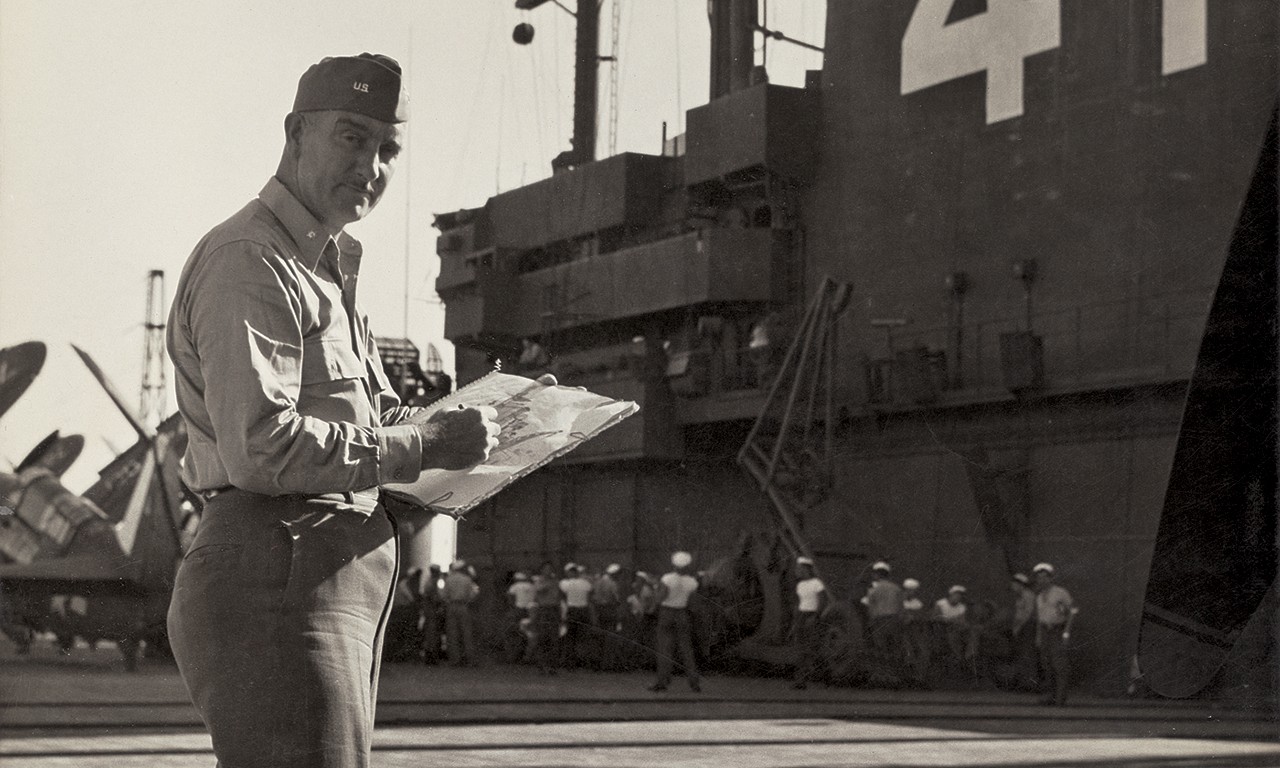 |
| Arthur Beaumont sketching on the deck of the USS Midway, November 1945 Beaumont Family Archives |
Final Destination
Beaumont’s time aboard ships oddly ended up being—at least in terms of his wellbeing—some of the least eventful time in his career. The Final Destination-like cloud that followed him throughout his shore leave only affected his nautical travels shortly after the end of World War II when Beaumont contracted cat fever while aboard the U.S.S. Midway—a disease which, despite its charming feline name, is an awful mixture of malaria and dysentery. Fortunately following the advent of antibiotics this disease was easily cured. By contrast and in addition to what has already been relayed, Beaumont was hit by several falling bricks during the Imperial Valley quake of 1915; his hand was crushed by a chair while he was assisting a student in 1952; and during a 1963 trip to the Taj Mahal, Beaumont suffered a heart attack that was not diagnosed until years later. Despite a lifetime of ill-fate, Beaumont survived it all and continued to be a fearless adventurer until his passing in 1978.
To see more paintings by Beaumont, visit Arthur Beaumont: Art of the Sea, opening at the Bowers Museum on Saturday, October 26th!
Arthur Beaumont: Art of the Sea is curated by James Irvine Swinden and includes works in The Irvine Museum Collection at the University of California, Irvine. Text and images may be under copyright. Please contact Collection Department for permission to use. References are available on request. Information subject to change upon further research.
Comments